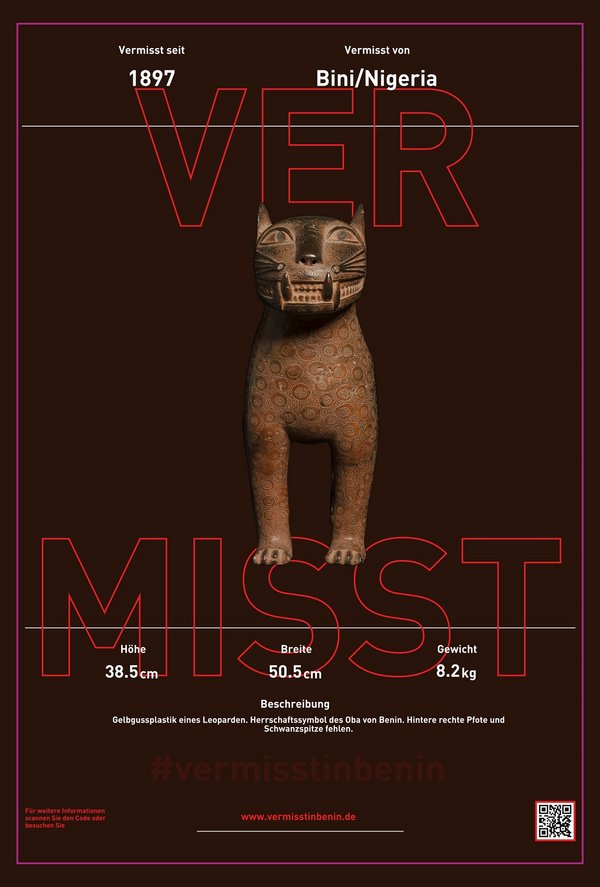* The Benin Bronzes are sculptures from the historical Kingdom of Benin in today’s Nigeria. The highly elaborated bronze casts were looted by British colonial troops during a so-called ‘punitive expedition’ in Benin City and were taken to Great Britain. The five bronzes which are at the focus of Ogboh’s artistic intervention came to the Dresden museum between 1899 and 1904. They were purchased in London from the British dealer in ethnographic antiquities William D. Webster (1868–1913) using funds made available by the well-known Saxon patron of the arts Arthur Baessler (1857–1907).
How did you come up with the idea?
Emeka Ogboh: I have a background in graphic design, and I have worked freelance in advertising prior to my present art career, so I understand the power of media interventions in public spaces. I figured that posters would be an effective way to reach and have an impact on the German public, with regards to the ongoing reparations dialogue.
What was your intention with the action that took place in urban space?
My intention was to accelerate the narrative around the reparation of the Benin artifacts currently in possession of the Museum für Völkerkunde Dresden. I believe that the reparations dialogue to date has been ineffective in having the objects returned to their original home of Benin, Nigeria. So, the intervention was conceived with the urgency and gravity of a public service announcement, out of a sense of impatience.
What were the reactions?
From the feedback we are getting, there are more people in Dresden that are now aware of the story of the Benin bronzes than before. And the fact that some of them have wanted to purchase a poster means it was positively received. The poster campaign also gained traction online on social media, increasing its reach and drawing more people into the conversation.
For more information on the campaign,
Interview: Carolin Baer
![[Translate to English:] Emeka Ogboh, Missing in Benin, 2021 [Translate to English:] Emeka Ogboh, Missing in Benin, 2021](/fileadmin/_processed_/5/6/csm_Img06_311220killig027_bc4a17326d.jpg)
Emeka Ogboh, Missing in Benin, 2021.
© SKD, Photo: Oliver Killig
![[Translate to English:] Poster campaign Missing in Benin, 2021 [Translate to English:] Poster campaign Missing in Benin, 2021](/fileadmin/_processed_/d/9/csm_Img01_Plakat_a0e1bd045b.jpg)
![[Translate to English:] Poster campaign Missing in Benin, 2021 [Translate to English:] Poster campaign Missing in Benin, 2021](/fileadmin/_processed_/6/f/csm_Img02_Plakat_3e83ca6068.jpg)
![[Translate to English:] Poster campaign Missing in Benin, 2021 [Translate to English:] Poster campaign Missing in Benin, 2021](/fileadmin/_processed_/9/c/csm_Img03_Plakat_bee1d6a2f0.jpg)
![[Translate to English:] Poster campaign Missing in Benin, 2021 [Translate to English:] Poster campaign Missing in Benin, 2021](/fileadmin/_processed_/4/1/csm_Img04_Plakat_9190e0eb27.jpg)
